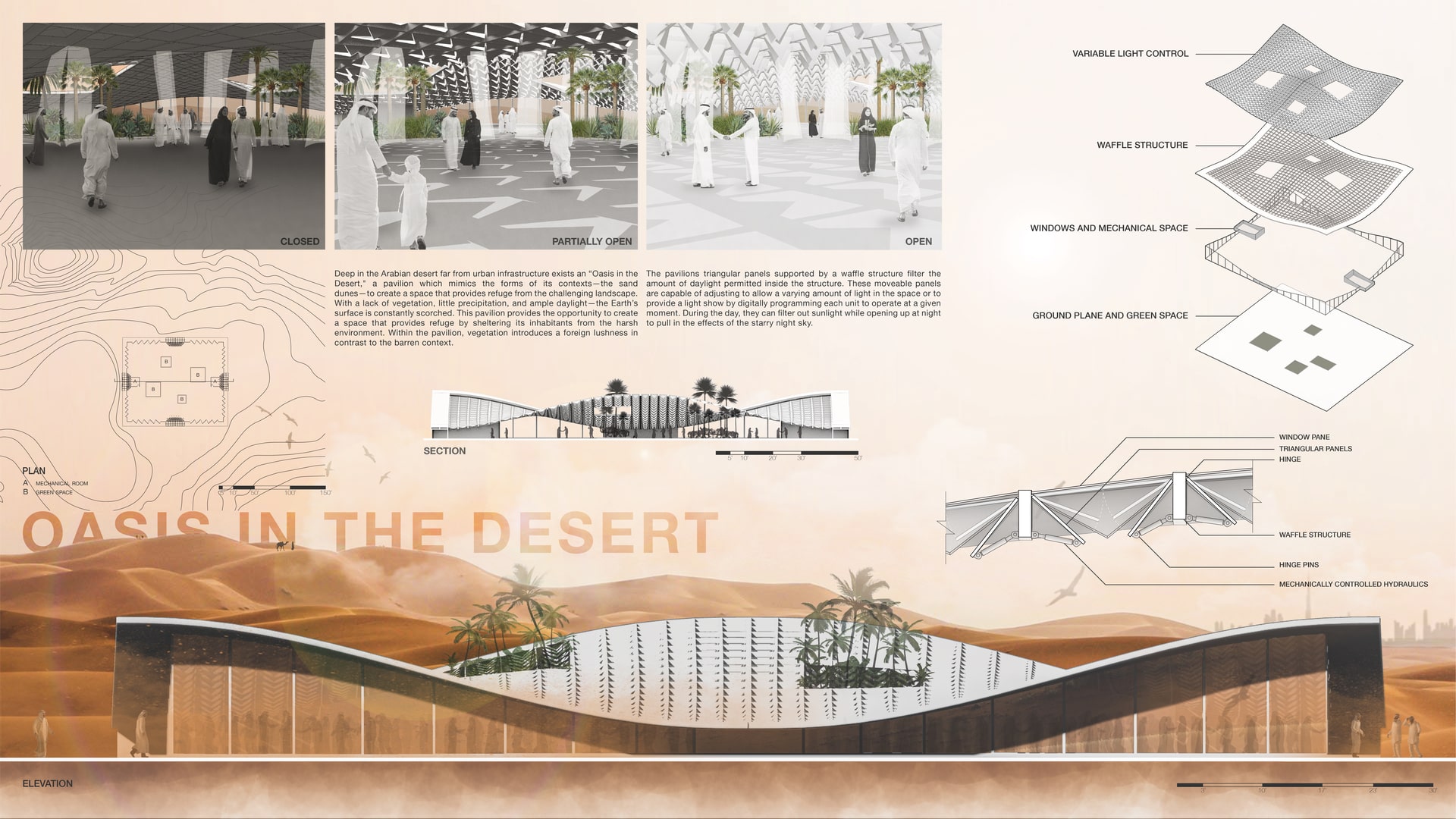Project Description
The Oasis in the Desert is located deep in a boundless landscape flooded with ample sunlight, little precipitation, and challenging life conditions. The lack of vegetation leaves the surface of the sandy dunes unprotected, scorched daylight and erasable by wind. The pavilion, located in the landscape of the Arabian Desert, far remote from urban infrastructure, is an attempt at mimicking the form of the contextual sand dunes to create a space that provides refuge by sheltering from the harsh environment. Inside the pavilion, vegetation squares provide contrast to the conditions of the surrounding area and evoke familiarity to the inhabitants, while the pavilion’s light control constantly adjusts to allow the adequate amount of daylighting into the space —without creating uncomfortable experience. By using kinetic architecture, triangular panels supported by a waffle structure bend inward into the pavilion allowing daylight to filter through and flood the floor area. As the membrane adjust, it is capable of sealing itself to prevent daylighting and external elements from entering—protecting the interior space. These movable panels can also be synchronized to put on a “natural light show” for pavilion dwellers by digitally programming each unit of the gridded structure to operate at a given moment. From the inside, the ceiling presents a kaleidoscope of geometric triangles each found within a square cell—shades opening and closing controlled by either the user or programmed to respond to environmental conditions. The pavilion presents the idea at a level to initially reach a large public audience—inhabitants of the Arabian Desert. The open ended program of the pavilion can be used for controlling daylight for events during the day, but can also open at night to show the stars in the sky—hence the remoteness of the pavilion removed from urban light pollution. With further research and experimentation, this can be used to clad buildings as a means to digitally mitigate light, especially in arid climates where there is a necessity to filter sunlight.
